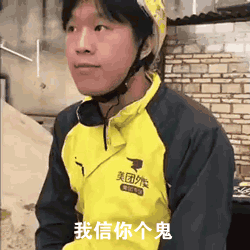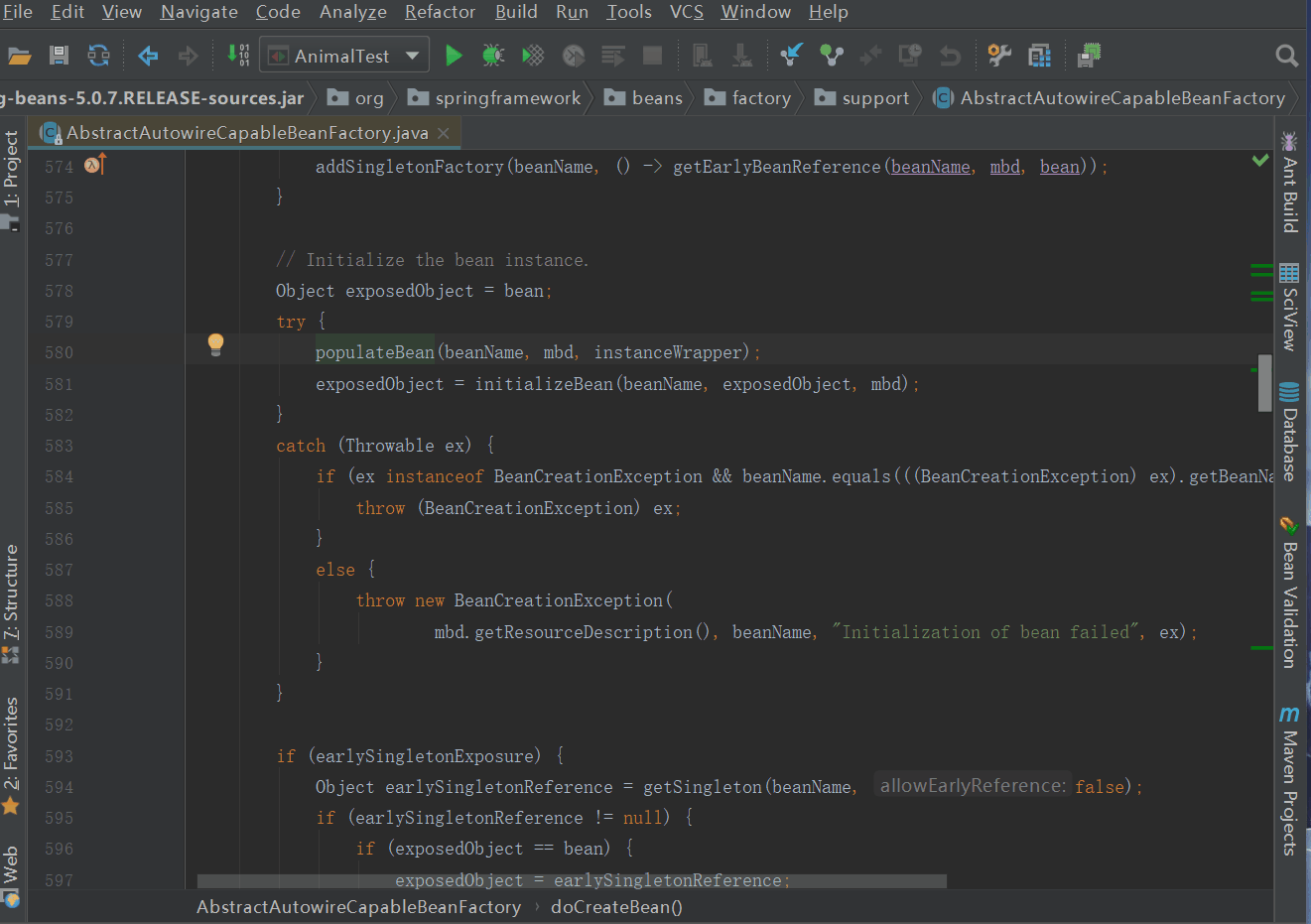spring的自动装配,骚话@Autowired的底层工作原理
前言
开心一刻
十年前,我:我交女票了,比我大两岁。妈:不行!赶紧分!
八年前,我:我交女票了,比我小两岁,外地的。妈:你就不能让我省点心?
五年前,我:我交女票了,市长的女儿。妈:别人还能看上你?分了吧!
今年,我挺着大肚子踏进家门。妈:闺女啊,你终于开窍了 !

前情回顾
Spring拓展接口之BeanPostProcessor,我们来看看它的底层实现中讲到了spring对BeanPostProcessor的底层支持,并且知道了BeanPostProcessor的两个方法:postProcessBeforeInitialization、postProcessAfterInitialization的执行时机,没看的小伙伴可以回过头去看看。本来spring的自动装配是打算放到上一篇博文中详细讲解的,可后来觉得篇幅可能太大了(细心的小伙伴可能会有这样的表情: ,除了几幅图,真没什么内容!),既然你们都感觉出来了,那我也就明人不说暗话了,之所以没放到上篇讲解,确实是因为篇幅太大了(哈哈哈,是不是很想打我?
,除了几幅图,真没什么内容!),既然你们都感觉出来了,那我也就明人不说暗话了,之所以没放到上篇讲解,确实是因为篇幅太大了(哈哈哈,是不是很想打我?  ); 好了,我们言归正传,之所以没放到上篇来讲,篇幅只是原因之一,最主要的原因是发现我犯错了! 犯什么错了呢(不是黄赌毒啊,那是犯罪,我是正人君子!
); 好了,我们言归正传,之所以没放到上篇来讲,篇幅只是原因之一,最主要的原因是发现我犯错了! 犯什么错了呢(不是黄赌毒啊,那是犯罪,我是正人君子! ),我想当然了! 理所当然的认为自动装配是在AutowiredAnnotationBeanPostProcessor的postProcessBeforeInitialization或postProcessAfterInitialization中实现的,我们来看下AutowiredAnnotationBeanPostProcessor类继承图
),我想当然了! 理所当然的认为自动装配是在AutowiredAnnotationBeanPostProcessor的postProcessBeforeInitialization或postProcessAfterInitialization中实现的,我们来看下AutowiredAnnotationBeanPostProcessor类继承图

它间接实现了BeanPostProcessor,我们再去看下那两个方法(在父类InstantiationAwareBeanPostProcessorAdapter中)
@Override
public Object postProcessBeforeInitialization(Object bean, String beanName) throws BeansException {
return bean;
} @Override
public Object postProcessAfterInitialization(Object bean, String beanName) throws BeansException {
return bean;
}
竟然啥也没干,只是简单的return bean ; 当自己深以为然的认知被推翻时,那感觉真是毙了狗了
; 当自己深以为然的认知被推翻时,那感觉真是毙了狗了 所以自动装配不能和BeanPostProcessor放一块讲,不得不开两篇来分开讲,我们都知道:强扭的瓜不甜!
所以自动装配不能和BeanPostProcessor放一块讲,不得不开两篇来分开讲,我们都知道:强扭的瓜不甜!
自动装配简单示例
我们先来看一个简单的自动装配的示例,完整实例代码:spring-boot-BeanPostProcessor
AnimalConfig
AnimalServiceImpl
@Service
public class AnimalServiceImpl implements IAnimalService { @Autowired
private Dog dog;
@Resource
private Cat cat;
@Inject
private Pig pig; @Override
public void printName() {
System.out.println(dog.getName());
System.out.println(cat.getName());
System.out.println(pig.getName());
}
}
AnimalTest
@RunWith(SpringRunner.class)
@SpringBootTest(classes={Application.class})
public class AnimalTest { @Autowired
private IAnimalService animalService; @Test
public void test() {
animalService.printName();
}
}
运行结果

我们在AnimalConfig中只是将Dog、Cat、Pig的实例注册到了spring容器,那为什么AnimalServiceImpl实例能够直接应用这些实例了,我们并没有手动的将这些实例赋值到AnimalServiceImpl实例呀? 这其实就是spring提供的自动装配功能,虽然我们没有手动的将这些实例赋值到AnimalServiceImpl实例,但是我们发现AnimalServiceImpl的属性实例上多了一些注解:@Autowired、@Resource、@Inject,spring通过这些注解自动完成了属性实例的注入,而不需要我们手动的去赋值了;那么spring是如何实现自动装配的呢? 我们慢慢往下看(注意:后文主要以@Autowired为例来讲解)
自动装配源码解析
AutowiredAnnotationBeanPostProcessor的实例化与注册
不管怎么说,AutowiredAnnotationBeanPostProcessor终归还是一个BeanPostProcessor,那么它的实例化与注册(注册到spring的beanFactory)过程与BeanPostProcessor的实例化与注册一样,在spring的启动过程中,刷新上下文(refresh)的时候,会调用registerBeanPostProcessors(beanFactory)方法完成BeanPostProcessor的实例化与注册,后续再调用finishBeanFactoryInitialization(beanFactory)实例化非延迟加载的单例bean时,会用到上述注册的BeanPostProcessor
AutowiredAnnotationBeanPostProcessor的构造方法值得我们看看
public AutowiredAnnotationBeanPostProcessor() {
this.autowiredAnnotationTypes.add(Autowired.class);
this.autowiredAnnotationTypes.add(Value.class);
try {
this.autowiredAnnotationTypes.add((Class<? extends Annotation>)
ClassUtils.forName("javax.inject.Inject", AutowiredAnnotationBeanPostProcessor.class.getClassLoader()));
logger.info("JSR-330 'javax.inject.Inject' annotation found and supported for autowiring");
}
catch (ClassNotFoundException ex) {
// JSR-330 API not available - simply skip.
}
}
默认情况下,AutowiredAnnotationBeanPostProcessor支持@Autowired和@Value,如果类路径下有java.inject.Inject(也就是引入了javax.inject.jar),那么也支持@Inject注解,是不是与我们最初的认知有些不一样? 。将支持的注解放到了autowiredAnnotationTypes属性中,后续会用到该属性
。将支持的注解放到了autowiredAnnotationTypes属性中,后续会用到该属性
bean的实例化与依赖注入
默认情况下,spring会把spring容器中的bean当成non-lazy-init singleton来处理(有些特殊的bean除外),也就是说会在spring的启动过程中就会逐个实例化这些bean,并对这些bean进行依赖注入;当我们真正用到这些bean的时候,直接用就行,不用再去实例化,也不用再去注入bean的相关依赖,spring是不是很厉害? 。具体是不是说的这样,大家准备好花生、瓜子和啤酒,好戏即将开始
。具体是不是说的这样,大家准备好花生、瓜子和啤酒,好戏即将开始
我们先找到正确的入口,然后用下图省略掉无聊的前戏,直接进入高潮:doCreateBean(不应该是这个吗 ,一天天的尽胡思乱想
,一天天的尽胡思乱想 )
)

doCreateBean内容如下
protected Object doCreateBean(final String beanName, final RootBeanDefinition mbd, final @Nullable Object[] args)
throws BeanCreationException { // Instantiate the bean.
BeanWrapper instanceWrapper = null;
if (mbd.isSingleton()) {
instanceWrapper = this.factoryBeanInstanceCache.remove(beanName);
}
if (instanceWrapper == null) {
// 创建bean实例
instanceWrapper = createBeanInstance(beanName, mbd, args);
}
final Object bean = instanceWrapper.getWrappedInstance();
Class<?> beanType = instanceWrapper.getWrappedClass();
if (beanType != NullBean.class) {
mbd.resolvedTargetType = beanType;
} // Allow post-processors to modify the merged bean definition.
// 允许后置处理器来修改bean定义
synchronized (mbd.postProcessingLock) {
if (!mbd.postProcessed) {
try {
// 调用MergedBeanDefinitionPostProcessor的postProcessMergedBeanDefinition方法
// AutowiredAnnotationBeanPostProcessor实现了MergedBeanDefinitionPostProcessor,即MergedBeanDefinitionPostProcessor的MergedBeanDefinitionPostProcessor会被调用
applyMergedBeanDefinitionPostProcessors(mbd, beanType, beanName);
}
catch (Throwable ex) {
throw new BeanCreationException(mbd.getResourceDescription(), beanName,
"Post-processing of merged bean definition failed", ex);
}
mbd.postProcessed = true;
}
} // Eagerly cache singletons to be able to resolve circular references 立即缓存单例以便能够解析循环引用
// even when triggered by lifecycle interfaces like BeanFactoryAware.
boolean earlySingletonExposure = (mbd.isSingleton() && this.allowCircularReferences &&
isSingletonCurrentlyInCreation(beanName));
if (earlySingletonExposure) {
if (logger.isDebugEnabled()) {
logger.debug("Eagerly caching bean '" + beanName +
"' to allow for resolving potential circular references");
}
addSingletonFactory(beanName, () -> getEarlyBeanReference(beanName, mbd, bean));
} // Initialize the bean instance.
Object exposedObject = bean;
try {
// 填充bean,包含依赖注入
populateBean(beanName, mbd, instanceWrapper);
// 初始化bean,BeanPostProcessor的两个方法在此中被调用
exposedObject = initializeBean(beanName, exposedObject, mbd);
}
catch (Throwable ex) {
if (ex instanceof BeanCreationException && beanName.equals(((BeanCreationException) ex).getBeanName())) {
throw (BeanCreationException) ex;
}
else {
throw new BeanCreationException(
mbd.getResourceDescription(), beanName, "Initialization of bean failed", ex);
}
} if (earlySingletonExposure) {
Object earlySingletonReference = getSingleton(beanName, false);
if (earlySingletonReference != null) {
if (exposedObject == bean) {
exposedObject = earlySingletonReference;
}
else if (!this.allowRawInjectionDespiteWrapping && hasDependentBean(beanName)) {
String[] dependentBeans = getDependentBeans(beanName);
Set<String> actualDependentBeans = new LinkedHashSet<>(dependentBeans.length);
for (String dependentBean : dependentBeans) {
if (!removeSingletonIfCreatedForTypeCheckOnly(dependentBean)) {
actualDependentBeans.add(dependentBean);
}
}
if (!actualDependentBeans.isEmpty()) {
throw new BeanCurrentlyInCreationException(beanName,
"Bean with name '" + beanName + "' has been injected into other beans [" +
StringUtils.collectionToCommaDelimitedString(actualDependentBeans) +
"] in its raw version as part of a circular reference, but has eventually been " +
"wrapped. This means that said other beans do not use the final version of the " +
"bean. This is often the result of over-eager type matching - consider using " +
"'getBeanNamesOfType' with the 'allowEagerInit' flag turned off, for example.");
}
}
}
} // Register bean as disposable.
try {
registerDisposableBeanIfNecessary(beanName, bean, mbd);
}
catch (BeanDefinitionValidationException ex) {
throw new BeanCreationException(
mbd.getResourceDescription(), beanName, "Invalid destruction signature", ex);
} return exposedObject;
}
我们重点看下posProcessMergedBeanDefinition方法和populateBean方法
posProcessMergedBeanDefinition

可以看到会读取bean的field和method上的注解,并判断该注解是否在autowiredAnnotationTypes中,如果在则将field封装成AutowiredFiledElement对象、将method封装成AutoWiredMethodElement对象,并存放到InjectionMetadata对象的Set<InjectedElement> checkedElements属性中,最后将该InjectionMetadata对象缓存到了AutowiredAnnotationBeanPostProcessor的Map<String, InjectionMetadata> injectionMetadataCache属性中;说白了就是将bean中被@Autowried(当然还包括@Value、@Inject)修饰的field、method找出来,封装成InjectionMetadata对象并缓存起来,就这么简单。不仅仅是上图中的animalServiceImpl这一个bean,spring中所有的非延迟加载的bean都会走这个创建流程。是不是很简单,是不是干劲十足了
populateBean

调用AutowiredAnnotationBeanPostProcessor的postProcessPropertyValues方法,从injectionMetadataCache中获取当前bean的依赖信息,比如animalServiceImpl依赖的dog、pig(有人可能会有这样的疑问:cat呢? cat是被@Resource修饰的,而@Resource不是由AutowiredAnnotationBeanPostProcessor支持,后续会讲由谁支持),然后逐个将依赖bean注入到目标bean(将dog、pig实例注入到animalServiceImpl实例中);依赖bean从哪来呢?还是从beanFactory中获取,如果不存在,则又回到bean的创建过程把依赖bean(dog、pig)创建出来,流程与创建animalServiceImpl实例一模一样,也就说在animalServiceImpl实例的依赖注入过程中会把dog、pig对象也创建出来,而不是等到spring逐个实例化bean的过程中轮到dog、pig才实例化dog、pig,那后续轮到dog、pig时怎么办了,spring会把创建的bean缓存起来,下次就直接从缓存中取了。上图只演示Field的,Method也差不太多,就不演示了,都是通过反射实现的 。
总结
1、bean的创建与初始化
(1)instanceWrapper = createBeanInstance(beanName, mbd, args) 创建目标bean实例;
(2)applyMergedBeanDefinitionPostProcessors(mbd, beanType, beanName) 寻找目标bean的依赖;
(3)populateBean(beanName, mbd, instanceWrapper) 填充目标bean,完成依赖注入; (这里的循环依赖,有兴趣的可以自行去琢磨下)
(4)initializeBean(beanName, exposedObject, mbd) 初始化目标bean
2、自动装配与自动配置
自动配置一般而言说的是spring的@Autowired,是spring的特性之一,而自动配置是springboot的@Configuration,是springboot的特性之一
3、Spring支持几下几种自动装配的注解
@Autowired、@Inject、@Resource以及@Value,用的最多的应该是@Autowired(至少我是这样的),@Inject和@Value也是由AutowiredAnnotationBeanPostProcessor支持,而@Resource是由CommonAnnotationBeanPostProcessor支持(还支持@PostConstruct、@PreDestroy等注解)
关于@Value与@Autowired,不知道大家是否清楚他们之间的区别,不清楚的可以看看:Spring: @Value vs. @Autowired或者spring的官方文档,总结下:@Value >= @Autowired,只是平时应用中,@Value更多的是用来注入配置值(如:@Value("${db.url}")),而@Autowired则是bean对象的注入
参考
深入理解Spring系列之十四:@Autowired是如何工作的
spring的自动装配,骚话@Autowired的底层工作原理的更多相关文章
- Spring学习----自动装配@Resource、@Autowired、@Qualifier
直接看下面的代码即可明白: applicationContext.xml里面添加个bean: <!--注解的注入 --> <bean id="student3" ...
- spring中自动装配bean
首先用@Component注解类: package soundsystem: import org.springframework.stereotype.Component; @Component p ...
- 五、Spring之自动装配
Spring之自动装配 Spring利用依赖注入(DI),完成对IOC容器中各个组件依赖关系的赋值. [1]@Autowired @Autowired 注解,它可以对类成员变量.方法及构造函数进行 ...
- Eureka 系列(03)Spring Cloud 自动装配原理
Eureka 系列(03)Spring Cloud 自动装配原理 [TOC] 0. Spring Cloud 系列目录 - Eureka 篇 本文主要是分析 Spring Cloud 是如何整合 Eu ...
- Spring的自动装配与依赖注入
Spring的自动装配与依赖注入 装配 = 创建Bean + 注入Bean 创建Bean 自动发现 显式注册Bean 注入Bean 基于配置的注入 自动注入 Spring的装配分为显式装配和隐式装配, ...
- spring注解-自动装配
Spring利用依赖注入(DI)完成对IOC容器中中各个组件的依赖关系赋值 一.@Autowired 默认优先按照类型去容器中找对应的组件(applicationContext.getBean(Boo ...
- Spring的自动装配和注解
Bean的自动装配 自动装配说明 自动装配是使用spring满足bean依赖的一种方法 spring会在应用上下文中为某个bean寻找其依赖的bean. Spring的自动装配需要从两个角度来实现,或 ...
- Spring的自动装配Bean
spring的自动装配功能的定义:无须在Spring配置文件中描述javaBean之间的依赖关系(如配置<property>.<constructor-arg>).IOC容器会 ...
- spring完成自动装配
让spring完成自动装配 Autowiring 解决标签为javaBean注入时难以维护而实现的 下面是几种autowire type的说明: 1,byname:试图在容器中寻找和需要自动装配的属性 ...
随机推荐
- SSAS中雪花模型
上面的[销售事实表]与[门店]维度.[集团]维度就组成了一个雪花模型. 1.可以把[集团]关联到[门店]的维度上去: 2.如果要把[集团]作为一个单独的维度,先在[维度]里把Dim_Group添加进来 ...
- (转载)Unity 优化总结
Unity 优化总结 2017-03-10 | 发布 大海明月 zengfeng75@qq.com | 分类 Unity | 标签 Unity 优化 相关文档 UGUI 降低填充率技巧两则 U ...
- java isAssignableFrom instanceof 小结 专题
一句话总结: isAssignableFrom()方法是从类继承的角度去判断,instanceof()方法是从实例继承的角度去判断. public native boolean isAssignabl ...
- Java面试:投行的15个多线程和并发面试题(转)
多线程和并发问题已成为各种 Java 面试中必不可少的一部分.如果你准备参加投行的 Java 开发岗位面试,比如巴克莱银行(Barclays).花旗银行(Citibank).摩根史坦利投资公司(Mor ...
- 最小化安装centos后ifconfig看不到eth0
最小换安装centos后,ifconfig看不到eth0,只看到一个lo ifup eth0
- iphone之打开pdf、doc、xls文件用UIWebView
//文件名字及类型 NSString *path=[[NSBundle mainBundle]pathForResource:@"xls1" ofType:@"xls&q ...
- (三)maven之一个基本的pom.xml
一个基本项目的pom.xml文件,通常会有以下三部分: 一.项目坐标,信息描述等. <modelVersion>4.0.0</modelVersion> <groupId ...
- 多源最短路径floyd
#include<iostream> #define INF 105 using namespace std; int main() { ][],mark,x,y,g; while(cin ...
- Vue+webpack+echarts+jQuery=demo
需要的插件: "dependencies": { "bootstrap": "^3.3.7", "echarts": & ...
- 分布式文件系统ceph介绍
ceph哲学思想 1. 每个组件必须支持扩展 2.不存在单点故障 3.解决方案必须是基于软件的.开源的.适应能力强 4.任何可能的一切必须自我管理 存在的意义:帮助企业摆脱昂贵的专属硬件 ceph目标 ...
